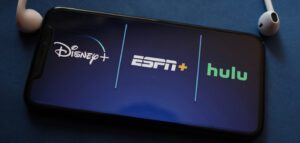 “The Sell Sider” is a column written by the sell side of the digital media community.
“The Sell Sider” is a column written by the sell side of the digital media community.
Today’s column is written by Kean Graham, founder and CEO at MonetizeMore.
It’s clear that header bidding isn’t Google’s favorite ad tech innovation. The company claims header bidding slows down page speeds and reduces ad viewability because ads take longer to load.
These claims have validity, and Google has always done a good job making strategic moves in favor of the user. Though header bidding is a relatively new technology, it is already evolving to address these issues. New header containers include timeouts for bid requests, for example, and force header bid networks to bid asynchronously so content can load without waiting for ads.
Even if header bidding innovation solves these early weaknesses, that won’t stop Google from trying to decelerate header bidding market penetration. Already it’s started charging for non-Google ad impressions on DoubleClick for Publishers (DFP) for all small business accounts and launched DFP First Look to all AdX accounts, which is positioned as a header bid solution alternative.
Google also unveiled AMP to increase page speed performance on mobile without initial header bidding compatibility. Then it launched beta testing of exchange bidding in dynamic allocation (EBDA) for non-Google demand sources.
Despite these moves, Google’s plans might not eradicate header bidding, for several reasons.
Header Bidding Isn’t Going Anywhere Soon
For example, the charge for non-Google impressions makes them, including header bidding, more expensive, but since header bidding impressions monetize so strongly, the difference between DFP CPMs and header bidding RPM is huge, making header bidding very profitable.
Google First Look is merely a method of guaranteeing ad inventory for Google advertisers that no other demand source could compete for, including header bid networks and direct advertisers. It is like running a private marketplace deal via a sponsorship line item on DFP.
Header bidding had taken many of the most valuable impressions from AdX via fair competition, and Google was able to guarantee that inventory to advertisers again via launching Google First Look. However, the use of Google First Look does not decrease the utility of header bidding. It is merely a drop in an ocean full of strong header bid performance.
AdExchanger Daily
Get our editors’ roundup delivered to your inbox every weekday.
Daily Roundup
Google may have launched AMP without being compatible with header bidding but publishers have pushed back. If it doesn’t relent, top publishers may adopt other alternatives that produce the same results, such as in-house custom mobile builds that are header bid compliant. Some publishers that have already tested AMP without header bidding saw drastic decreases in page RPMs. However, it seems that Google has listened to publishers and has initiated header bidding tests within Google AMP.
Finally, some non-Google demand sources will prefer not to work via Google’s exchange bidding in dynamic allocation because they will undoubtedly charge a revenue share; industry chatter puts the charge at 10% to 15%. DoubleClick Ad Exchange will also have a major advantage because of tiny timeouts for third-party ad networks, making it more difficult for them to submit winning bids in time.
Now What?
Will publishers have to choose between header bidding and the ability to use Google AMP? If Google sticks to its guns, Google AMP will never be header bidding compatible. However, that restriction alone will most likely hinder the growth and popularity of the product and it seems Google is already considering header bid compatibility.
What about EBDA, Google’s biggest threat to header bidding? It’s much easier to implement for publishers, is better for page load times and takes less optimization. That said, not all demand sources are going to play ball with Google. There will be reluctance to pay a revenue share, join a marketplace that’s already tilted toward Google and hand their data to Google on a silver platter. For that reason, many demand sources will choose header bidding over EBDA.
DFP has the ability to run both header bidding and EBDA. Google could make DFP noncompatible with header bidding but it hasn’t yet and it’s doubtful that it will. Header bidding is too important to publishers and if Google did do such a thing, the alternative ad servers would be at the doorstep waiting for the flood of new business from top publishers.
I believe the future for ad inventories of most advanced publishers will have a combination of EBDA and header bidding implemented within the same ad server.
Follow MonetizeMore (@monetizemore) and AdExchanger (@adexchanger) on Twitter.












